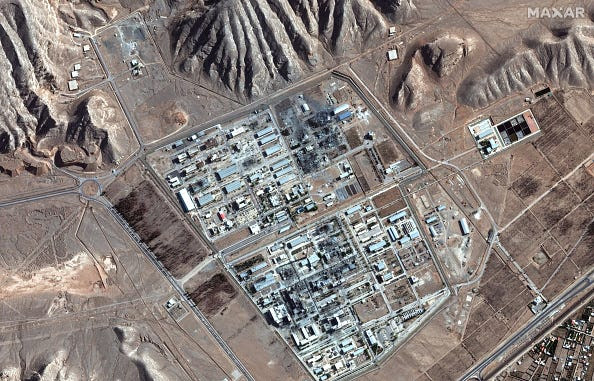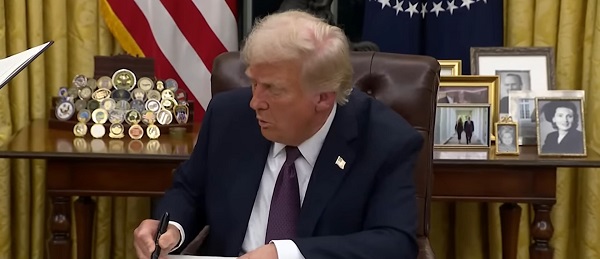conflict
Middle East War Shows No Signs Of Stopping One Year After Oct. 7 — And No Clear Path To Exit

From the Daily Caller News Foundation
By Jake Smith
The chaos of Hamas’ October 7, 2023, invasion of Israel is still being felt one year later as the broader region grapples with a conflict that has shown no signs of stopping.
Hamas Oct. 7 terrorist attacks caught Israel by surprise and resulted in the murder of approximately 1,200 people and the kidnapping of hundreds of others, including American citizens. Israel retaliated and launched a war against Hamas in Gaza, which a year later has not ended but instead spilled into the broader Middle East and drawn in other bad actors such as Hezbollah and Iran.
“We’re still stuck in Oct. 7, 2023, in one unending day of terror, of fear, of anger, of despair,” Yuval Baron, an Israeli citizen whose father-in-law is still being held by Hamas in Gaza, told Reuters.
Israeli forces have largely occupied Gaza and killed thousands of Hamas operatives, largely crippling the terrorist group’s capabilities, although it has come at great humanitarian cost to the enclave, according to Reuters. The conflict has displaced millions of Palestinians and wreaked havoc across Gaza, leaving many areas uninhabitable, Bloomberg reported.
The effort to build Gaza after the fighting ends — whenever that may be — will likely be an incredibly costly venture that could take years and require joint cooperation between several Arab states, according to Bloomberg. Millions of tons of debris will have to be cleared from the enclave while buildings are repaired or replaced.
“We thought it would be two months [of fighting] — at most,” Mohammed Shakib Hassan, a Palestinian civil servant who fled his home after Israeli forces entered Gaza last year, told The New York Times. “Twelve months have passed in front of our eyes.”
Israel, with the help of the U.S., has on several occasions made offers for a ceasefire in Gaza conditioned on the release of the remaining hostages held by Hamas and the surrender of the terrorist group, but these proposals have been rejectedmultiple times. Yayha Sinwar, the leader of Hamas who has been hiding underground in Gaza, reportedly believes that he is not going to survive the war and has zero intention of reaching a ceasefire deal with Israel at this point in the conflict, according to U.S. intelligence assessments reviewed by The New York Times.
The Biden-Harris administration has spent months brokering negotiations between Israel and Hamas and working with regional mediators to try to reach a deal, but these efforts have largely been fruitless. Though President Biden has on several occasions predicted that a ceasefire could be reached in short order, his own officials now privately believe it will be near impossible to get a deal done between now and January, the end of Biden’s term.
“They’re probably not going to get one before the election, or before January either. But that’s not on them, per se. It speaks to the difficulty of how far apart [Israel and Hamas] are,” former State Department official Gabriel Noronha told the Daily Caller News Foundation in September.
There have been various roadblocks to getting a deal done. Specifically, Israel wants to leave troops along the Gaza-Egyptian border, arguing that it would stonewall Hamas from trafficking in weapons, but Hamas has rejected this term.
Though the prospects of a deal are unlikely at this point, Israel’s war with Hamas in Gaza has largely come to a close as the terrorist group’s capabilities have been vastly diminished.
“Hamas is a shadow of its former self. Israel is going to continue to try to eradicate them, but it’s sort of a guerilla campaign. Hamas is being starved and smoked out. I suspect that you’re going to see Hamas go underground somewhat — more figuratively than literally at this point,” Noronha told the DCNF last month.
Instead, Israel has shifted much of its forces and focus away from Gaza and toward Lebanon, which houses the Iranian-backed terrorist group Hezbollah. Hezbollah is Iran’s largest terrorist group in the Middle East and has engaged in cross-fire skirmishes with Israel since last October out of support for Hamas, displacing thousands of civilians near the Israel-Lebanon border, according to NPR.
Hostilities between Israel and Hezbollah have reached a boiling point in recent weeks, as Israel has launched sweeping airstrikes against the terrorist group in southern Lebanon and killed the group’s leader in an airstrike in late September, according to The Washington Post. Israeli forces have begun ground raids against Hezbollah targets in Lebanon, in what could be the prelude to a much larger ground invasion.
The Biden-Harris Administration, along with other allies, also put forward on Sep. 26 a separate ceasefire proposal for Israel and Hezbollah, although it was seemingly ignored by both parties.
“It’s clear that Israel is determined to rid Lebanon of Hezbollah,” senior fellow at the Strauss Center and former Pentagon official Simone Ledeen told the DCNF. “They need Hezbollah to lay down their arms and surrender… the Israelis [are] really focused on getting to that objective.”
The multi-front Middle East conflict extends also to Iran, which — though it has helped orchestrate and fund the various terror attacks against Israel — made an unprecedented move in April and launched a sweeping missile strike against Israel from directly within Iran’s borders, according to the Center for Strategic and International Studies. Iran launched a similar attack against Israel last week in the form of roughly 180 missiles, most of which were intercepted by U.S. and Israeli forces.
Israel is expected to respond with an attack directly against Iran, although the timing and nature of the move is publicly unknown. The Biden-Harris administration is helping coordinate the attack with Israel, though it wants Israel to avoidgoing after the country’s nuclear facilities.
“The launch of over 180 ballistic missiles by Tehran requires a decisive reaction to prevent future attacks,” Israeli intelligence agent Avi Melamed said in a statement on Monday. “Currently, it seems that Israel is finalizing its operational plans while the U.S. prepares munitions to defensively counter any potential Iranian counterstrike.”
The conflict extends even further into Iraq, Syria and Yemen, all hotspots for other various Iranian-backed terrorist groups that have attacked U.S. and Israeli forces in the region since last October, according to Axios. Israeli forces have launched a series in those regions, too, in recent months.
Until the current Middle East conflict comes to an end, the possibility of regional peace may be too far out of reach, even as that remains a goal for other key Arab states and Western nations. Iran’s “axis of resistance” has taken severe blows since last October, according to Axios.
But Israeli forces are stretched across multiple fronts in a conflict with no clear end game, and the Israeli people seem to be growing more and more weary of the conflict; 23% of Israelis considered leaving the country in the last year, according to a recent poll cited by Axios.
“This war won’t end because nobody is willing to blink,” Thomas Nides, former U.S. ambassador to Israel, told the Times. “In the meantime, everyone is losing — hostages and their families, innocent Palestinians, Israelis displaced from northern Israel, Lebanese civilians. And it’s truly tragic.”
conflict
US airstrike on Iran’s nuclear facilities. Was it obliteration?

A satellite image of the Isfahan nuclear research center in Iran shows visible damage to structures and nearby tunnel entrances from recent US airstrikes. / Satellite image (c) 2025 Maxar Technologies.
 Seymour Hersh
Seymour Hersh
The US attack on Iran may not have wiped out its nuclear ambitions but it did set them back years
I started my career in journalism during the early 1960s as a reporter for the City News Bureau of Chicago, a now long-gone local news agency that was set up by the Chicago newspapers in the 1890s to cover the police and fire departments, City Hall, the courts, the morgue, and so on. It was a training ground, and the essential message for its aspiring reporters was: “If your mother says she loves you, check it out.”
It was a message I wish our cable networks would take to heart. CNN and MSNBC, basing their reporting on an alleged Defense Intelligence Agency analysis, have consistently reported that the Air Force raids in Iran on June 22 did not accomplish their primary goal: total destruction of Iran’s nuclear-weapons capacity. US newspapers also joined in, but it was the two nominally liberal cable channels, with their dislike—make that contempt—for President Donald Trump, that drove the early coverage.
There was no DIA analysis per se. All US units that engage in combat must file an “after-action report” to the DIA after a military engagement. In this case, the report would have come from the US Central Command, located at MacDill Air Force base in Tampa, Florida. CENTCOM is responsible for all US military operations in the Middle East, Egypt, Central Asia, Afghanistan, and Pakistan. One US official involved in the process told me that “the first thing out of the box is you have to tell your boss what happened.” It was that initial report of the bombing attack that was forwarded to DIA headquarters along the Potomac River in Washington and copied or summarized by someone not authorized to do so and sent to the various media outlets.
The view of many who were involved in the planning and execution of the mission is that the report was summarized and leaked “for political purposes”—to cast immediate doubt on the success of the mission. The early reports went so far as to suggest that Iran’s nuclear program has survived incapacitation by the attack. Seven US B-2 “Spirit” bombers, each carrying two deep-penetration “bunker-busters” weighing 30,000 pounds, had flown without challenge from their base in Missouri to the primary target: Iran’s Fordo nuclear facility, concealed deep inside a mountain twenty miles north of the city of Qom.
The planning for the attack began with the knowledge that the main target—the working area of the nuclear program—was buried at least 260 feet below the rocky surface at Fordo. The gas centrifuges spinning there were repeatedly enriching uranium, in what is known as a cascade, not to weapons-grade level—uranium-235 isotopes enriched to 90 percent—but to 60 percent. Further processing to create weapons grade uranium, if Iran chose to do so, could be done in a matter of weeks, or less. The Air Force planning group had also been informed before the bombing raid, most likely by the Israelis, who have a vast spy network in Iran, that more than 450 pounds of the enriched gas stored at Fordo had been shipped to safety at another vital Iranian nuclear site at Isfahan, 215 miles south of Tehran. Isfahan was the only known facility in Iran capable of converting the Fordo gas into a highly enriched metal—a critical early stage of building the bomb. Isfahan also was a separate target of the US attack on Fordo, and was pulverized by Tomahawk missiles fired by a U.S. submarine operating in the Gulf of Aden, off Yemen.
As a journalist who for decades has covered the nascent nuclear crisis in the Middle East, it seemed clear to me and to informed friends I have in Washington and Israel that if Fordo somehow survived its bunker-buster attack, as was initially suggested, and continued to enrich more uranium, Isfahan would not. No enrichment, no Iranian bomb.
I’ve been frustrated and angry at cable news coverage for years, and that includes Fox News, too, and decided to try and find the real story. If your mother says she loves you, check it out. And I checked out enough of it to share.
I was told that “the first question for the American planners was how big was the actual workspace at Fordo? Was it a structure? We had to find that out before we got rid of it.” Some of the planners estimated that the working space “was the size of two hockey rinks: 200 feet long and 85 feet wide.” It came to 34,000 square feet. The height of the underground working space was assumed to be ten-and-a-half feet—I was not told the genesis of that assumption—and the size of the target was determined to be 357,000 cubic feet.
The next step was to measure the power of the dozen or more bunker-busters that were planned to be “carefully spaced and dropped” by the US B-2 bombers, using the most advanced guidance systems. (During one high-level session in Washington, one of the Air Force planners was asked what would happen if the B-2’s guidance systems were corrupted by an outside signal. “We’d miss the target” was the answer.)
I was assured that even if the rough estimate of the working space at Fordo was far off, the bombers targeting Fordo each carried a 30,000-pound bomb with an explosive payload of as much as five thousand pounds, which was more than enough to pulverize the mythical hockey rinks, or even a much larger working space.
Some of the bombs were also outfitted with what is known as a hard target void sensing fuze, which enabled the bombs to penetrate multiple layers of a site like Fordo before detonating. This would maximize the destructive effect. Each bomb, dropped in sequence, would create a force of rubble that would cause increasing havoc in the working areas deep inside the mountain.
“The bombs made their own hole. We built a 30,000-pound steel bullet,” the official told me, referring with pride to the bunker-busters.
Most important, he said, was that there were no post-strike hints detected of radioactivity—more evidence that the 450 pounds of enriched uranium had been moved from Fordo to the reprocessing site at Isfahan prior to the US attack there, which was code-named “Midnight Hammer.” That operation included a third US strike at yet another nuclear facility at Natanz.
“The Air Force got everything on the hit list,” the official told me. “Even if Iran rebuilds some centrifuges, it will still need Isfahan. There is no conversion capability without it.”
Why not, I asked, tell the public about the success of the raid and the fact that Iran no longer has a potential nuclear weapon?
The answer: “There will be a top-secret report about all of this, but we don’t tell people how hard we work. We tell the public what we think it wants to hear.”
The US official, asked about the future of the Iranian nuclear program, quickly acknowledged that “there is a communication problem” when it comes to the fate of the program.
The intent of the strike planners, he said, “was to prevent the Iranians from building a nuclear weapon in the near term—a year or so—with the hope they would not try again. The clear understanding was that there was no expectation to ‘obliterate’ every aspect of their nuclear program. We don’t even know what that is.
“Obliteration means the glass—[eliminating] Iran’s nuclear program—is full. The planning and the results are the glass is half-full. For Trump critics, the results are the glass is half-empty—the centrifuges may have survived and four hundred pounds of 60 percent enriched uranium are missing. The bombs could not be assured to penetrate the centrifuge chamber . . . too deep, but they could cover them up [with rocks and other bomb debris] and in the process cause unknown damage to them.
“Whether the 60 percent [enriched uranium] was there or not is irrelevant because without centrifuges they cannot refine it to weapons grade. Add to this the research and refinement and conversion from gas to metal—required for a bomb—at Isfahan are also gone.
“Results? Glass is half-full . . . a couple of years of respite and uncertain future. So now Trump’s defense is Full Glass. Critics? Half-empty. Reality? Half-full. There you are.”
The immediate beneficiary of the use of US force in Iran will not be a more placid Middle East, but Israel, and Prime Minister Benjamin Netanyahu. The Israeli Air Force and army are still killing massive numbers of Palestinians in Gaza.
There remains no evidence that Iran was on the cusp of becoming a nuclear power. But as the world has known for decades, Israel maintains a significant nuclear arsenal that it officially claims does not exist.
This is a story not about the bigger picture, which is muddled, but about a successful US mission that was the subject of a lot of sloppy reporting because of a reviled president. It would have been a breakthrough had anyone in the mainstream press spoken or written about the double standard that benefits Israel and its nuclear umbrella, but in America that remains a taboo.
Subscribe to Seymour Hersh.
For the full experience, upgrade your subscription.
conflict
Obama Dropped Over 26K Bombs Without Congressional Approval

@miss_stacey_ Biden, Clinton, Obama & Harris on Iran #biden #clinton #obama #harris #trump #iran #nuclear
Iran has been the target for decades. Biden, Harris, and Clinton—all the Democrats have said that they would attack Iran if given the opportunity. It appears that Donald Trump is attempting to mitigate a potentially irresolvable situation. As he bluntly told reporters: We basically — we have two countries that have been fighting so long and so hard that they don’t know what the f‑‑‑ they’re doing.”
A portion of the nation believes Trump acted like a dictator by attacking Iran without Congressional approval. I explained how former President Barack Obama decimated the War Powers Resolution Act when he decided Libya was overdue for a regime change. The War Powers Act, or War Powers Resolution of 1973, grants the POTUS the ability to send American troops into battle if Congress receives a 48-hour notice. The stipulation here is that troops cannot remain in battle for over 60 days unless Congress authorizes a declaration of war. Congress could also remove US forces at any time by passing a resolution.
Libya is one of seven nations that Obama bombed without Congressional approval, yet no one remembers him as a wartime president, as the United States was not technically at war. Over 26,000 bombs were deployed across 7 nations under his command in 2016 alone. Libya, Afghanistan, Syria, Yemen, Somalia, Iraq, and Pakistan were attacked without a single vote. Donald Trump’s recent orders saw 36 bombs deployed in Iran.
The majority of those bombings happened in Syria, Libya, and Iraq under the premise of targeting extremist groups like ISIS. Drone strikes were carried out across Somalia, Yemen, and Pakistan as the Obama Administration accused those nations of hosting al-Qaeda affiliated groups. Coincidentally, USAID was also providing funding to those groups.
The 2001 Authorization for Use of Military Force (AUMF) was initially implemented to hunt down the Taliban and al-Qaeda after the 9/11 terrorist attacks. Obama broadened his interpretation of the AUMF and incorporated newly formed militant groups that were allegedly expanding across the entire Middle East. The Bureau of Investigative Journalism believes there were up to 1,100 civilian casualties in Pakistan, Yemen, and Somalia. Thousands of civilians died in Syria and Iraq but the death toll was never calculated. At least 100 innocent people died in the 2016 attacks in Afghanistan alone.
The government will always augment the law for their personal agenda. The War Powers Resolution was ignored and the AUMF was altered. Congress was, however, successful in preventing Obama from putting US troops on the ground and fighting a full-scale war. In 2013, Obama sought congressional approval for military action in Syria but was denied. Obama again attempted to deploy troops in 2015 but was denied. Congress has to redraft the AUMF to specifically prevent Obama from deploying troops in the Middle East. “The authorization… does not authorize the use of the United States Armed Forces on the ground in Syria for the purpose of combat operations.” Obama attempted to redraft the AUMF on his own by insisting he would prohibit “enduring offensive ground combat operations” or long-term deployment of troops. He was met with bipartisan disapproval as both sides believed he was attempting to drag the United States into another unnecessary war.
The United States should not be involved in any of these battles, but here we are. Those living in fear that Donald Trump is a dictator fail to recognize that past leadership had every intention of sending American men and women into battle unilaterally without a single vote cast.
-

 Business2 days ago
Business2 days agoWEF-linked Linda Yaccarino to step down as CEO of X
-

 Automotive2 days ago
Automotive2 days agoAmerica’s EV Industry Must Now Compete On A Level Playing Field
-

 Business2 days ago
Business2 days ago‘Experts’ Warned Free Markets Would Ruin Argentina — Looks Like They Were Dead Wrong
-

 International2 days ago
International2 days agoSecret Service suspends six agents nearly a year after Trump assassination attempt
-

 Business1 day ago
Business1 day agoCarney government should recognize that private sector drives Canada’s economy
-

 Bruce Dowbiggin1 day ago
Bruce Dowbiggin1 day agoThe Covid 19 Disaster: When Do We Get The Apologies?
-

 Alberta1 day ago
Alberta1 day agoFourteen regional advisory councils will shape health care planning and delivery in Alberta
-

 Alberta1 day ago
Alberta1 day agoAlberta school boards required to meet new standards for school library materials with regard to sexual content








